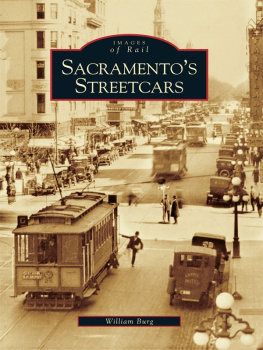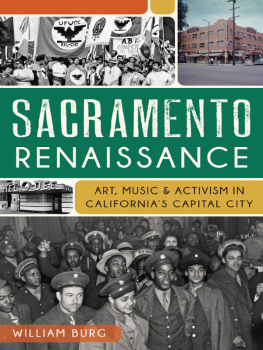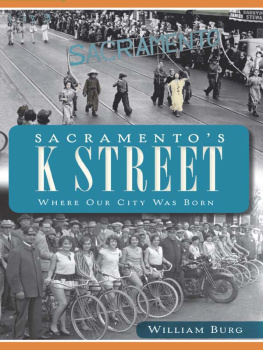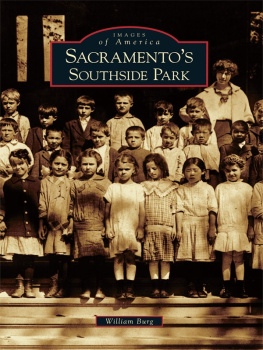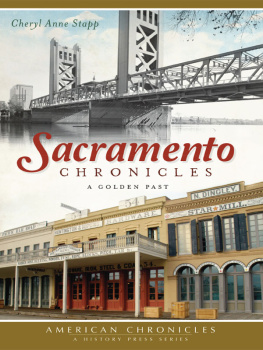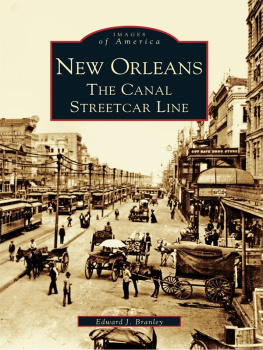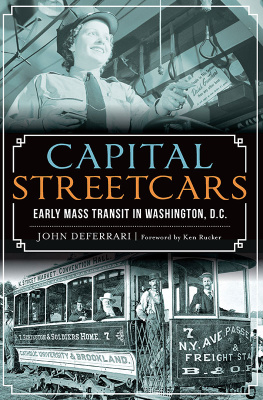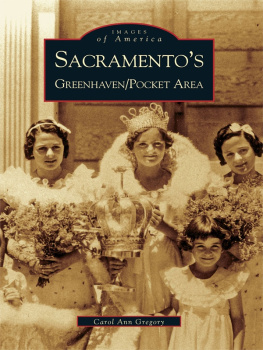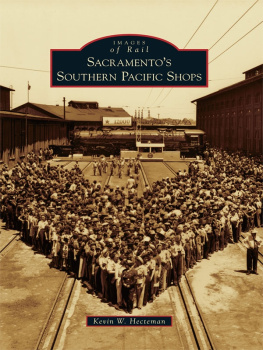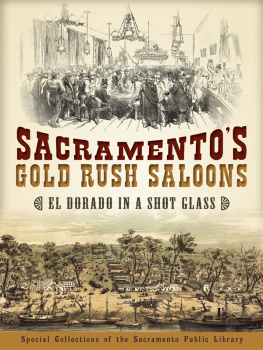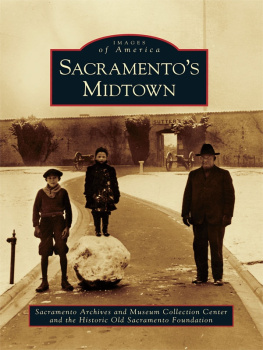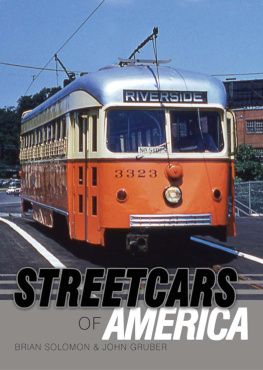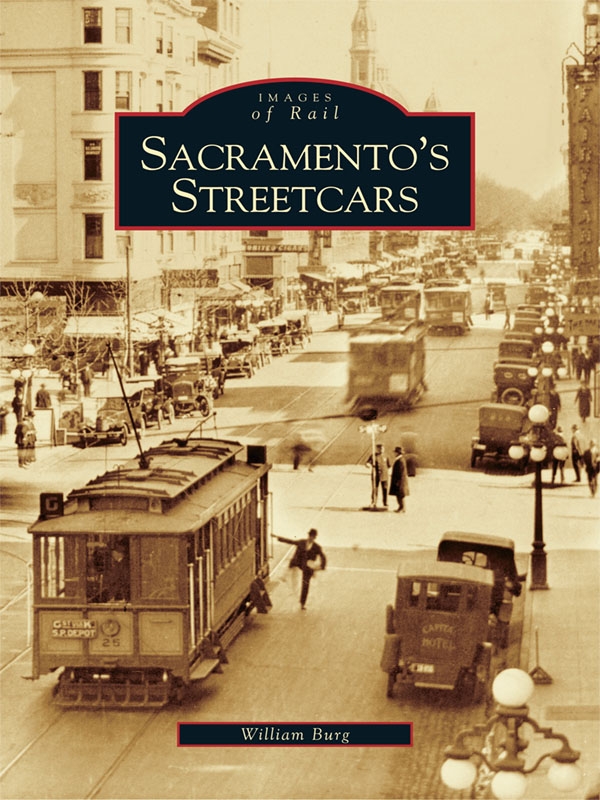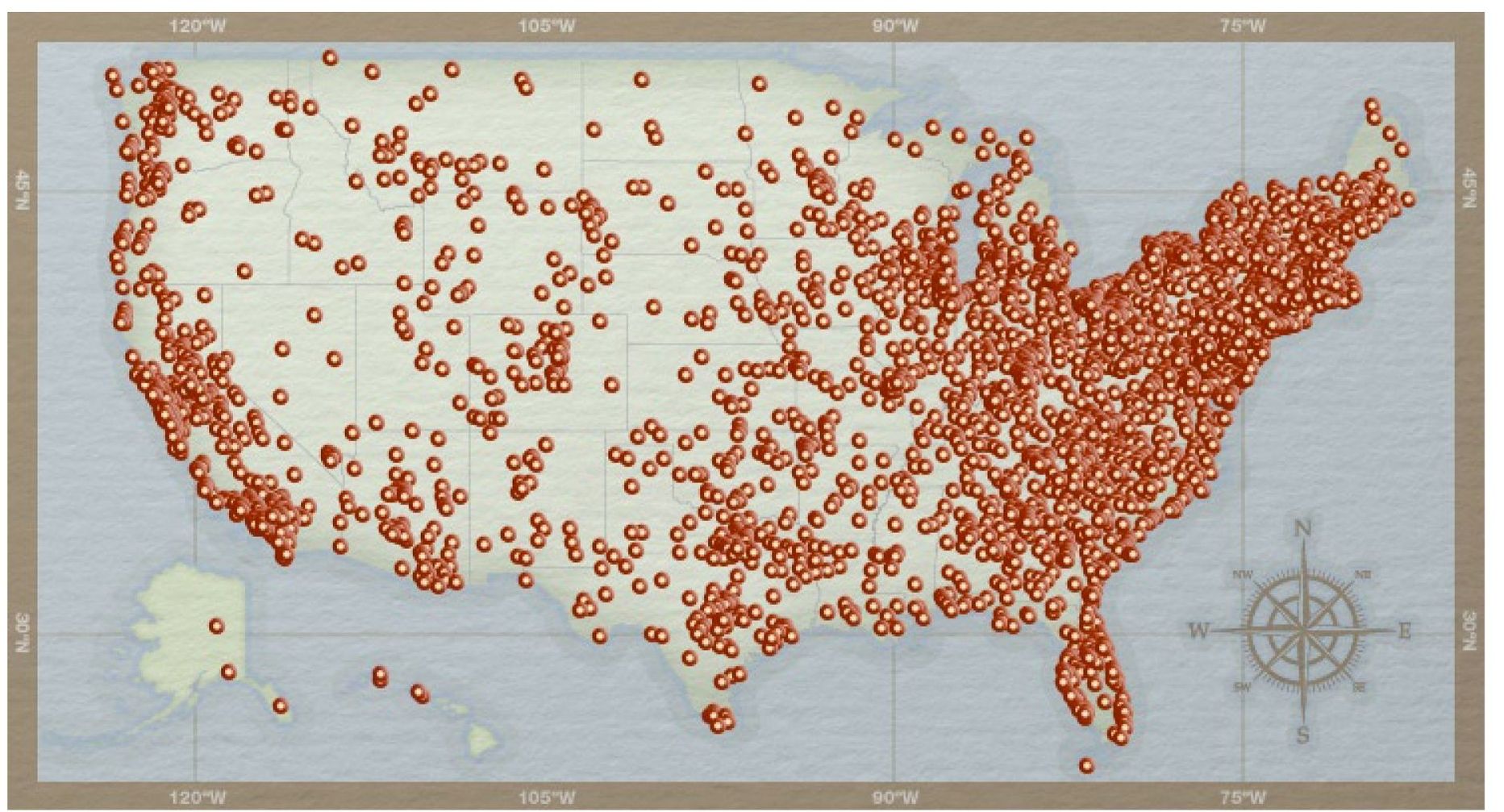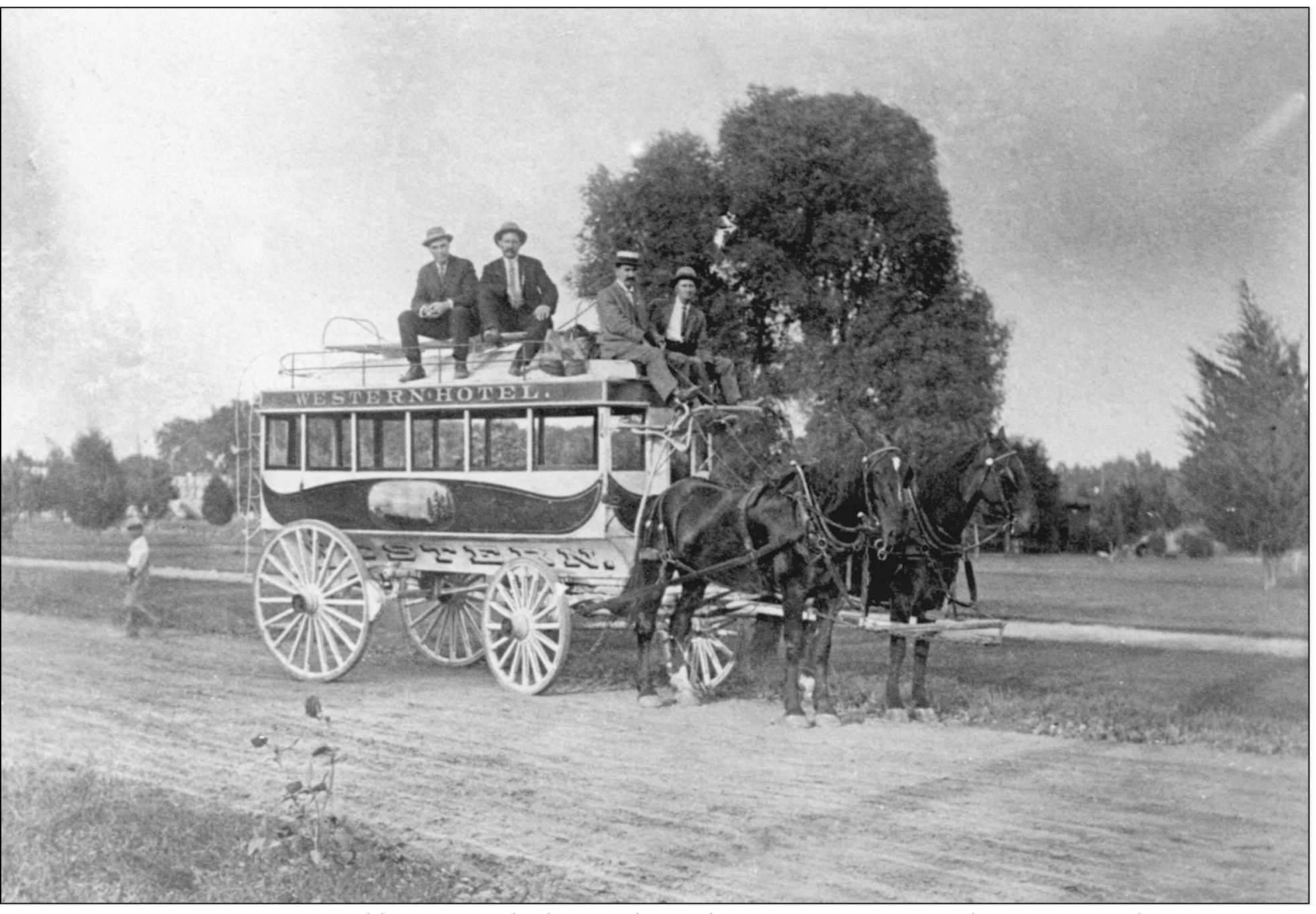ACKNOWLEDGMENTS
This book is the result of my work with the Western Railway Museums collection of Sacramento photographs. The Western Railway Museum, located at Rio Vista Junction, is a public museum operated by the Bay Area Electric Railroad Association (BAERA.) Except for those indicated otherwise, all of the photographs in this book are from that collection. In appreciation for access to this collection, all authors royalties from this book will be contributed to the Western Railway Museum, specifically for the restoration of the Sacramento streetcars in their collection. My thanks to the archive staff and volunteers, especially archivist Bart Nadeau, Mike Dreiling, and Harry Aitken, who helped provide many answers to my constant deluge of questions, and to BAERA member Grant Hess, whose photographs and knowledge of Oak Park history added much to this book.
Thanks also to Bob Blymyer for his technical assistance, peer review, and information about early streetcar lines and the buses of the post-streetcar era. Bob has been a BAERA member for over 30 years. Thanks also to Tom Tolley and the staff of the Sacramento Room at the Central Sacramento Library, Kyle Wyatt of the California State Railroad Museum, and the staff of the Sacramento Archives and Museum Collections Center (SAMCC).
Thanks to my editor at Arcadia, John Poultney, for encouraging me to start this book and as the deadline approached, urging me to finish it.
Thanks to my wife, Vivian, for her support, encouragement, and understanding.
Thanks to Birdie Boyles, Jack Davis, and Al Balshor, who shared their memories of the streetcars and life, work, and play in Sacramento.
Finally, thanks to the rail fan photographers of the Bay Area Electric Railroad Association who photographed Sacramentos streetcars. These photographers include (but are not limited to) Roy Covert, Peter Khyn, F. T. Hill, Addison Laflin, E. L. Estacaille, and Vernon Sappers. Without their enthusiasm for streetcars and their copious photographs, this book would be impossible.
BIBLIOGRAPHY
Anderson, Christy and William E. Mahan, History of McKinley Park. Sacramento History Journal , Vol. III, No. 1. Winter and Spring 2003.
Bottles, Scott L. Los Angeles And The Automobile: The Making of the Modern City . Berkeley, CA: University of California Press Ltd., 1987.
Day, Rowena Wise, Carnival of Lights. Golden Notes, Vol. 16. July 1970: 23.
Groff, Garth. Sacramento Northern On-Line. Available at http://www.people.virginia.edu/%7Eggg9y/home.html .
Lucy, Eldon W. The Mystery Trip. The Circuit Breaker: An Occasional Publication of the Bay Are Electric Railroad Association , Vol. 1, No. 38. June 3, 1951.
Mankoff, Al. Sacramentos Shining Rails: A History of Trolley Transportation in Californias Capital . Canton, OH: Railhead Publications, 1993.
Railway and Locomotive Historical Society, Pacific Coast Chapter. Street Railways of Sacramento. The Western Railroader No. 204. October 1956.
Railway and Locomotive Historical Society, Pacific Coast Chapter. Street Railways of Sacramento, The Western Railroader , No. 530. May 1987.
Reed, G. Walter, History of Sacramento County , Los Angeles: Historic Record Company, 1923.
Sacramento County and its resources: A Souvenir of the Bee, 1894. Sacramento, CA: H. S. Crocker Company, 1895.
Stanley, David G. and Jeffrey J. Moreau, Central California Traction: Californias Last Interurban. Wilton, CA: Signature Press, 2002.
Swett, Ira L. Sacramento Northern: Interurbans Special 26 . Glendale, CA: Interurban Press, 1962.
Swett, Ira L. Cars of Sacramento Northern: Interurbans Special 32. South Gate, CA: Interurban Press, 1963
Smallwood, Charles A. The PG&E Sacramento City Car Lines, The Street Railway Review, No. 16 and No. 17. 610 and 1318.
Wright, George F., ed., History of Sacramento County, California , Oakland, CA: Thompson and West, 1880.
Find more books like this at
www.imagesofamerica.com
Search for your hometown history, your old
stomping grounds, and even your favorite sports team.
One
HORSE CARS AND ELECTRIC WIRES
Sacramentos first experiment with public streetcars, a horse-drawn line from Third and R Streets to Second and K Streets, was built in 1858 but lasted only until a flood in 1861 destroyed it. Through the 1860s, Sacramentos first public conveyances were horse-drawn omnibuses, which pulled passengers on Sacramentos dirt streets. The completion of the Central Pacific Railroad in 1869 spurred the need for a public streetcar system, since Sacramento was originally the Central Pacifics western terminus.
Sacramentos City Street Railway, using horse-drawn cars, carried its first customers on August 20, 1870, for a fare of 5. Riders traveled from the Central Pacific station at Front and K Streets to the State Agricultural Societys California State Fairgrounds at Twentieth and G Streets. By July 1871, the line had extended south to the City Cemetery on Tenth and Y Streets and east to Thirty-first and H Streets, site of the streetcar companys privately owned East Park. The railway company had a horse barn at Tenth and K Streets, which was later moved to Twentieth and K Street.
In 1887, several horse-drawn streetcars of the Central Street Railway, a competing line based on Twenty-eighth Street, were converted to battery-powered electric drive, but these experiments were short-lived. Electric power would not prove practical for public transit until power could be transmitted directly to the cars by an overhead wire. In 1890, Sacramentos first electric trolley line was completed, powered by coal-fired steam generators. The day of the horse-drawn streetcar ended. The Central Street Railway Company became the Central Electric Railway Company.
Sacramentos first public transit vehicles were horse-drawn passenger wagons known as omnibuses. This photograph, taken around 1860, shows the omnibus of the Western Hotel, located at Second and K Streets. Many hotels offered omnibus service as a way to attract travelers from the Central Pacific station on Front Street to the front door of their hotel. For service across town, Sacramentans rode the City Omnibus Line, owned principally by Thomas Berkey. This omnibus company operated between the Central Pacific station at Front and K Street and Sutters Fort at Twenty-eighth and K Streets. After the destruction of the original street railway system in 1861, several applications were made to the city to construct street railways during the 1860s but none were completed until 1870. (Bob Blymyer collection.)
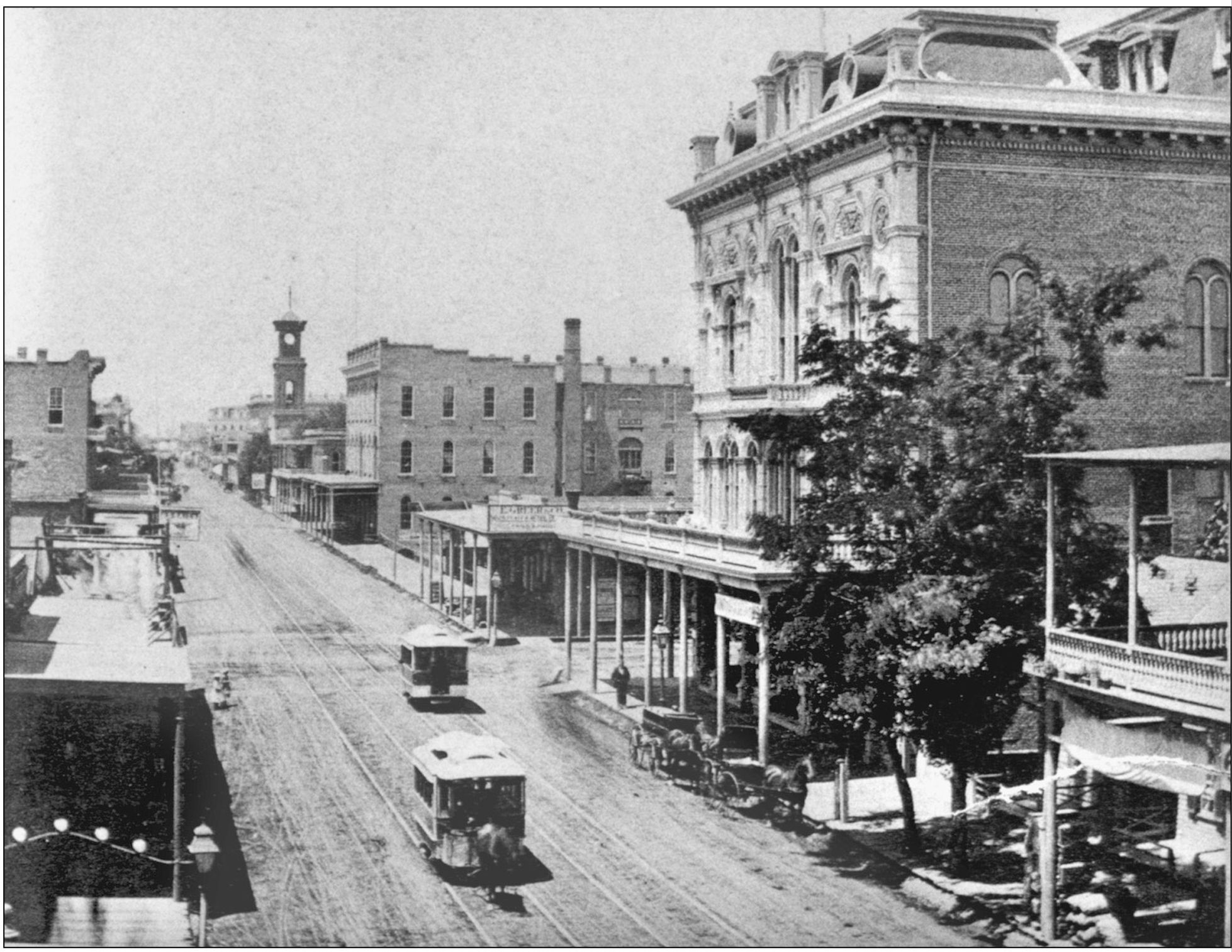
In the 1870s, horse-drawn streetcars of the City Street Railway, owned by R. S. Carey, ran from the Central Pacific station to K Street, through Sacramento to the state fairgrounds at Twentieth and G Streets, and ended at East Park on Thirty-first Street. Carey was also the president of the State Agricultural Society, host of the state fair, between 1873 and 1877. The fairgrounds, originally known as Union Park, were purchased in 1862 by the State Agricultural Society and were located between E and H Streets and Twentieth and Twenty-second Streets in the neighborhood now known as Boulevard Park. The original set of eight horse cars were ordered from the Kimball Manufacturing Company, based in San Francisco. Kimball produced horse-drawn streetcars, cable cars, omnibuses, and even steam railroad cars for the Central Pacific and Virginian & Truckee railroads. Two cars arrived in time for the first day of service on August 20, 1870. The other six went into regular service shortly afterward. Service to East Park began on July 24, 1871. (Authors collection.)

